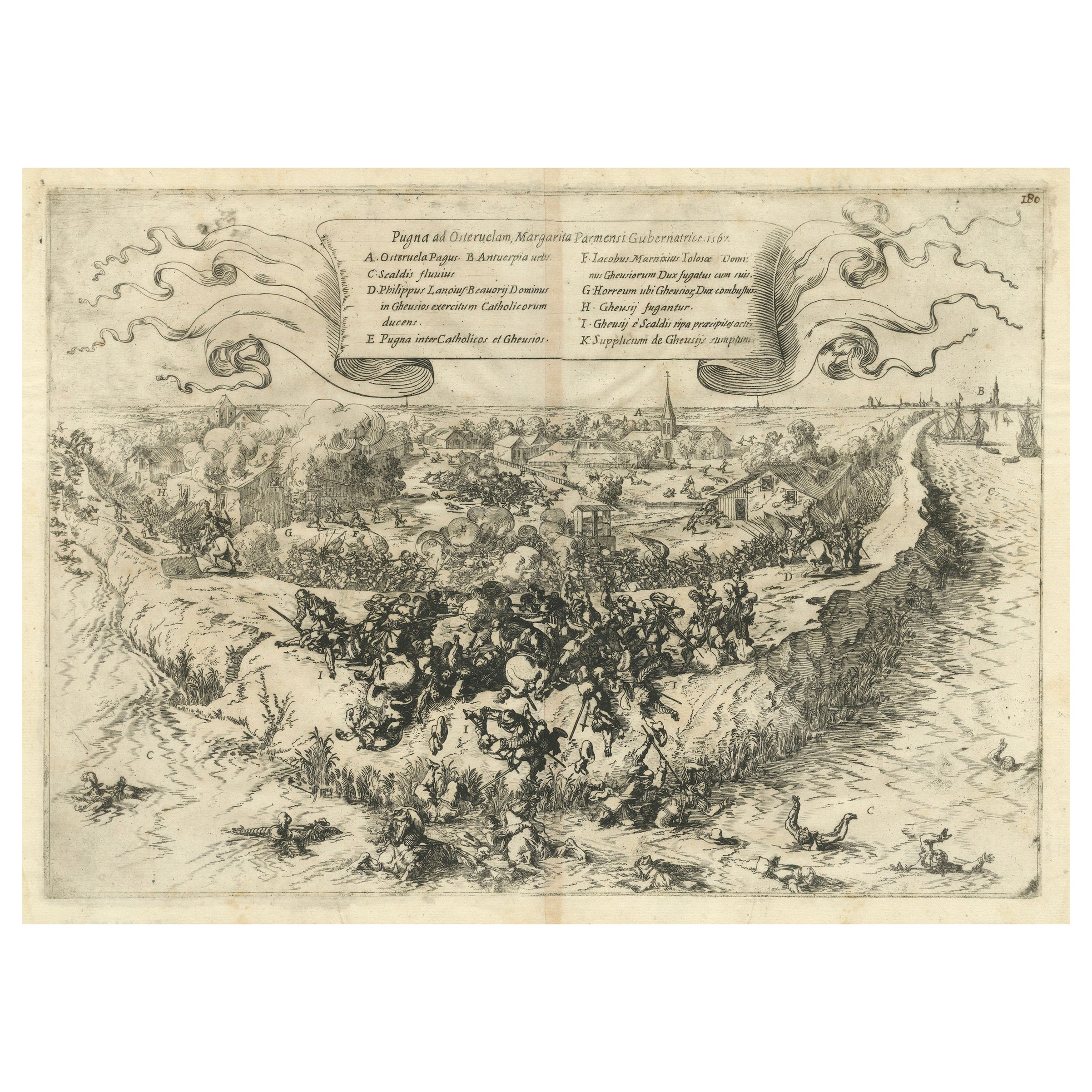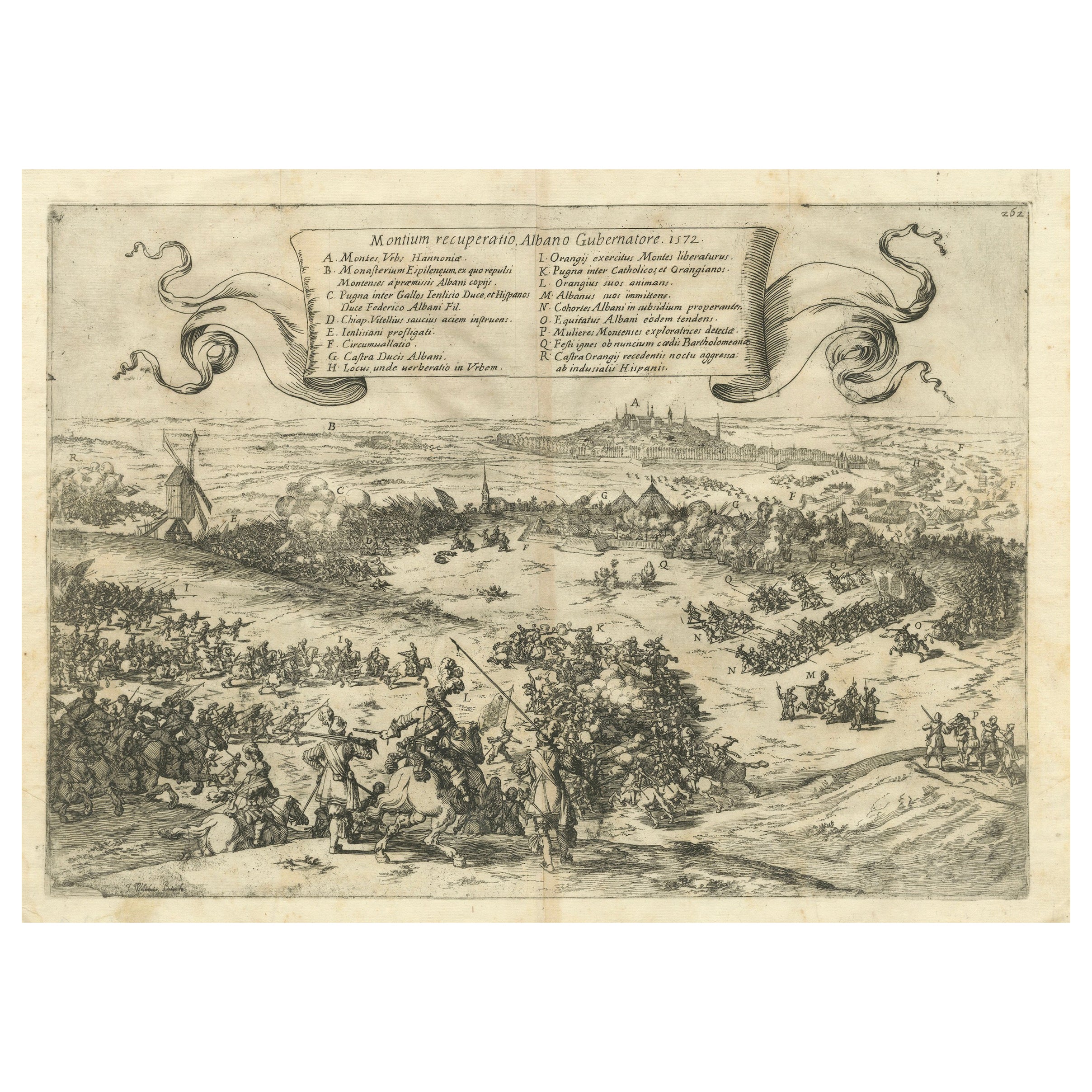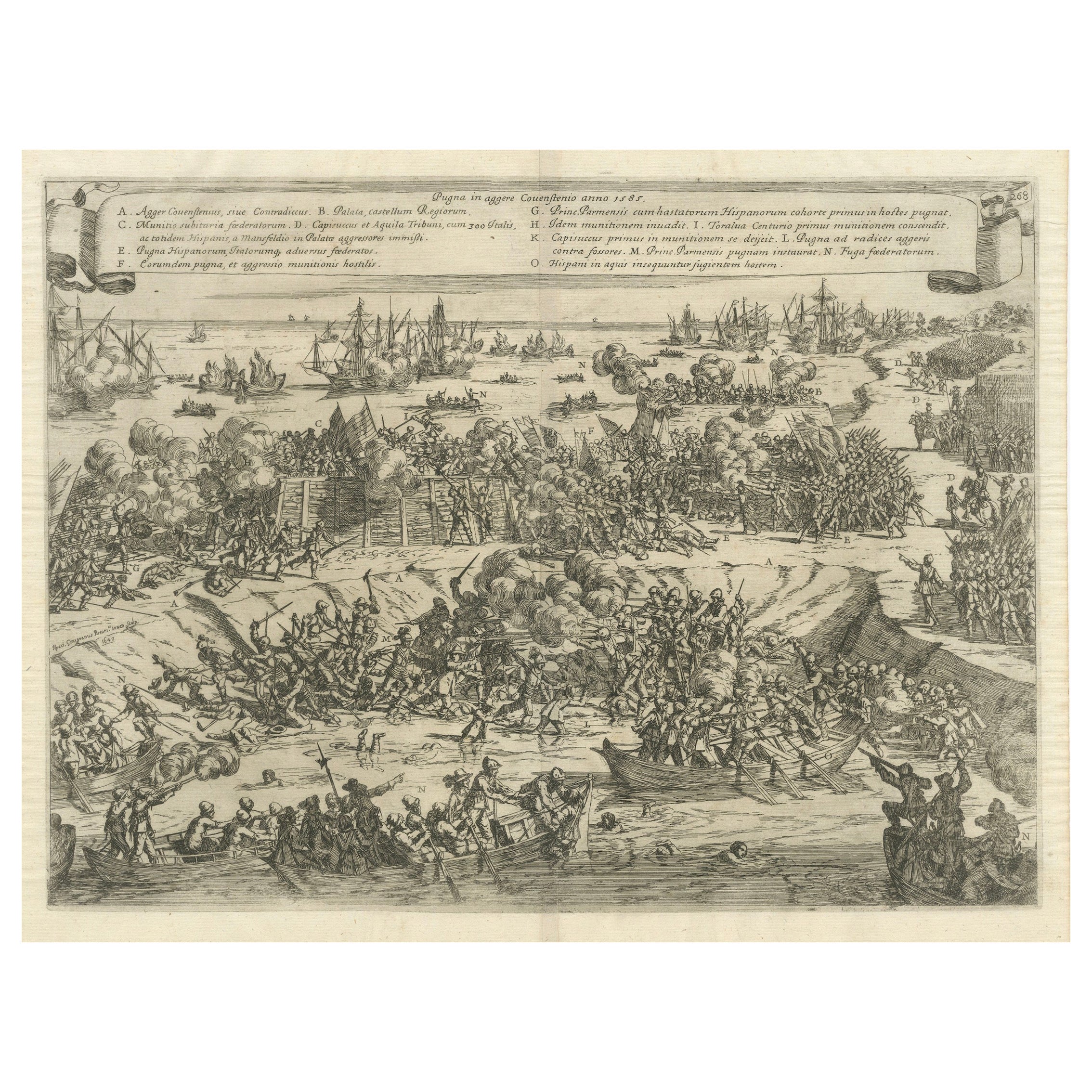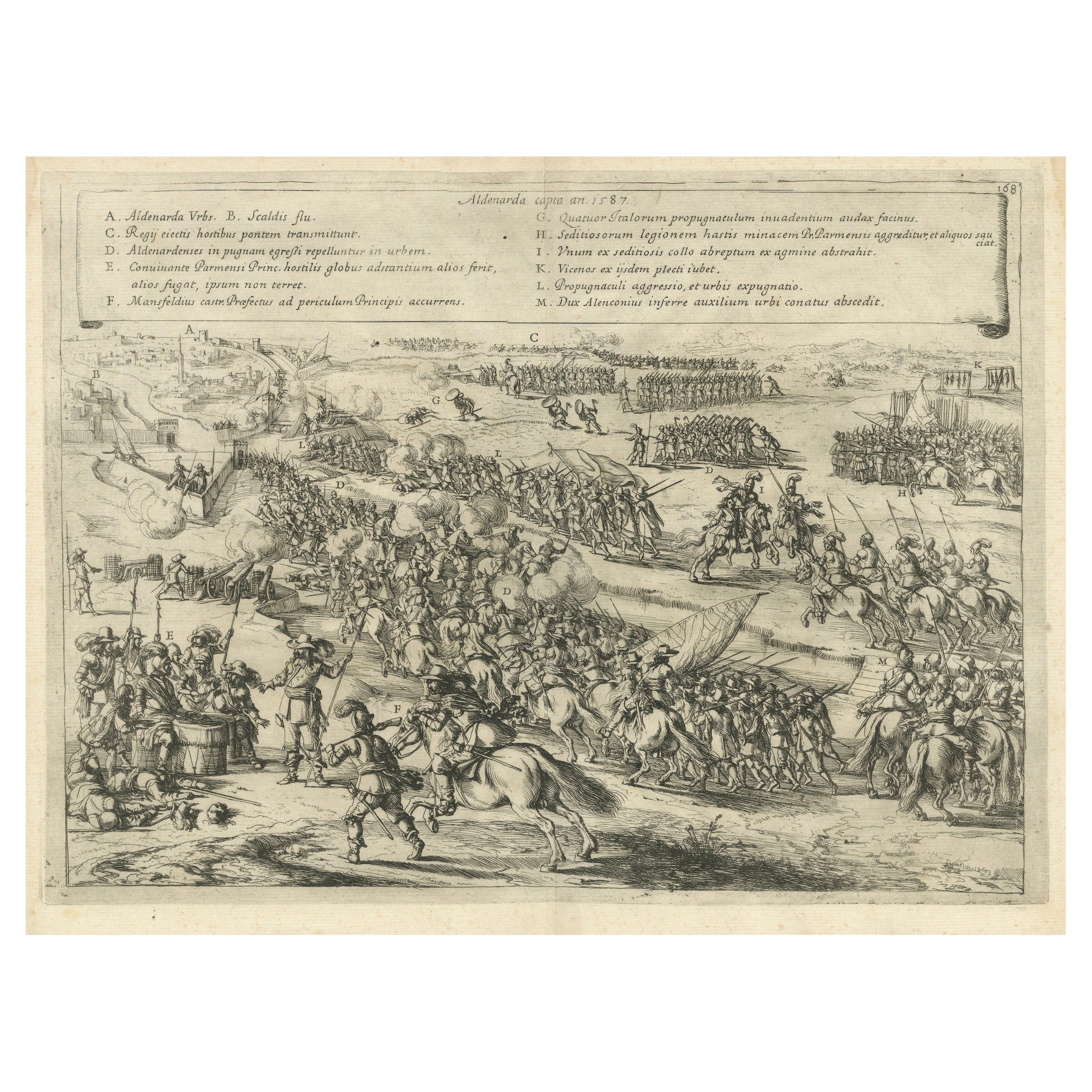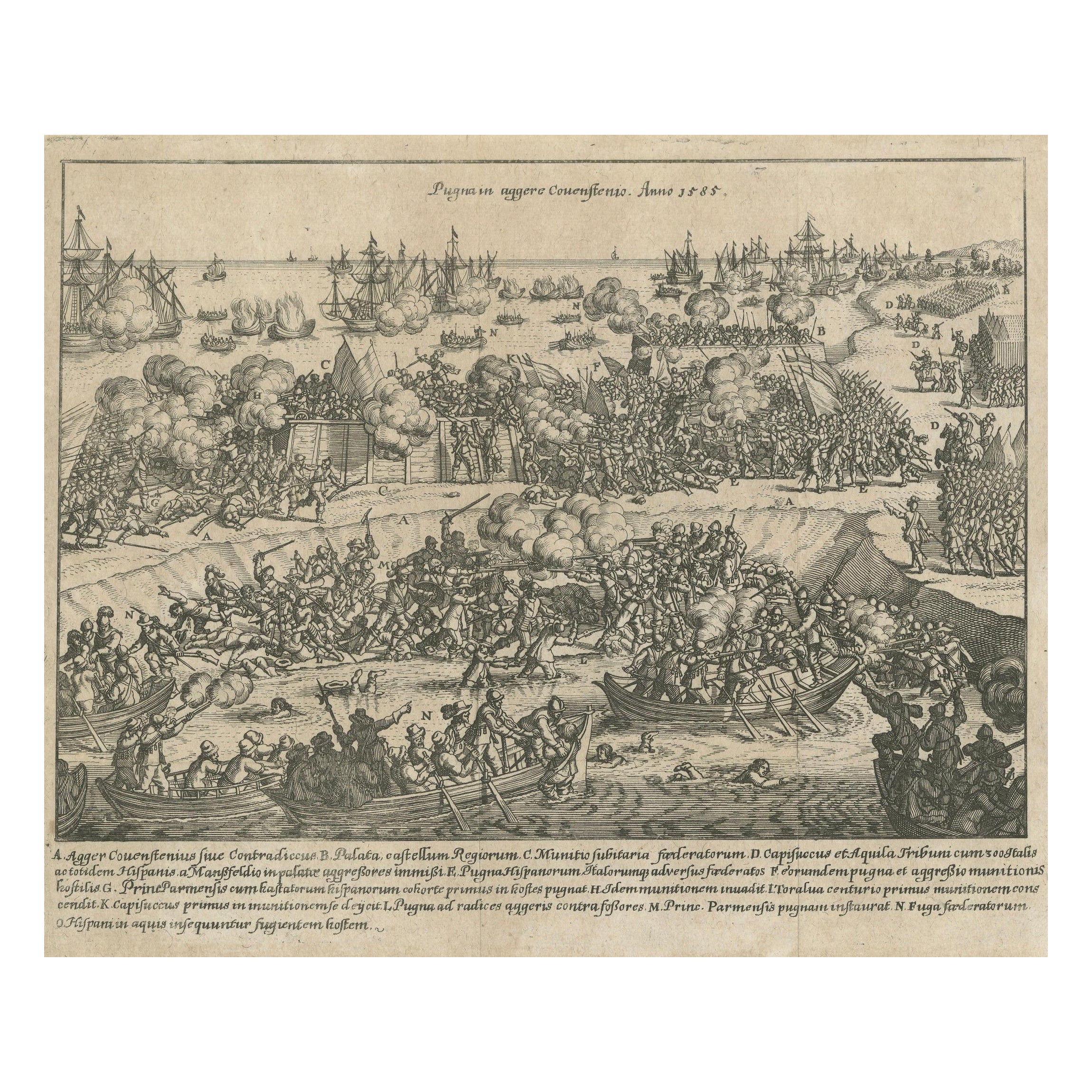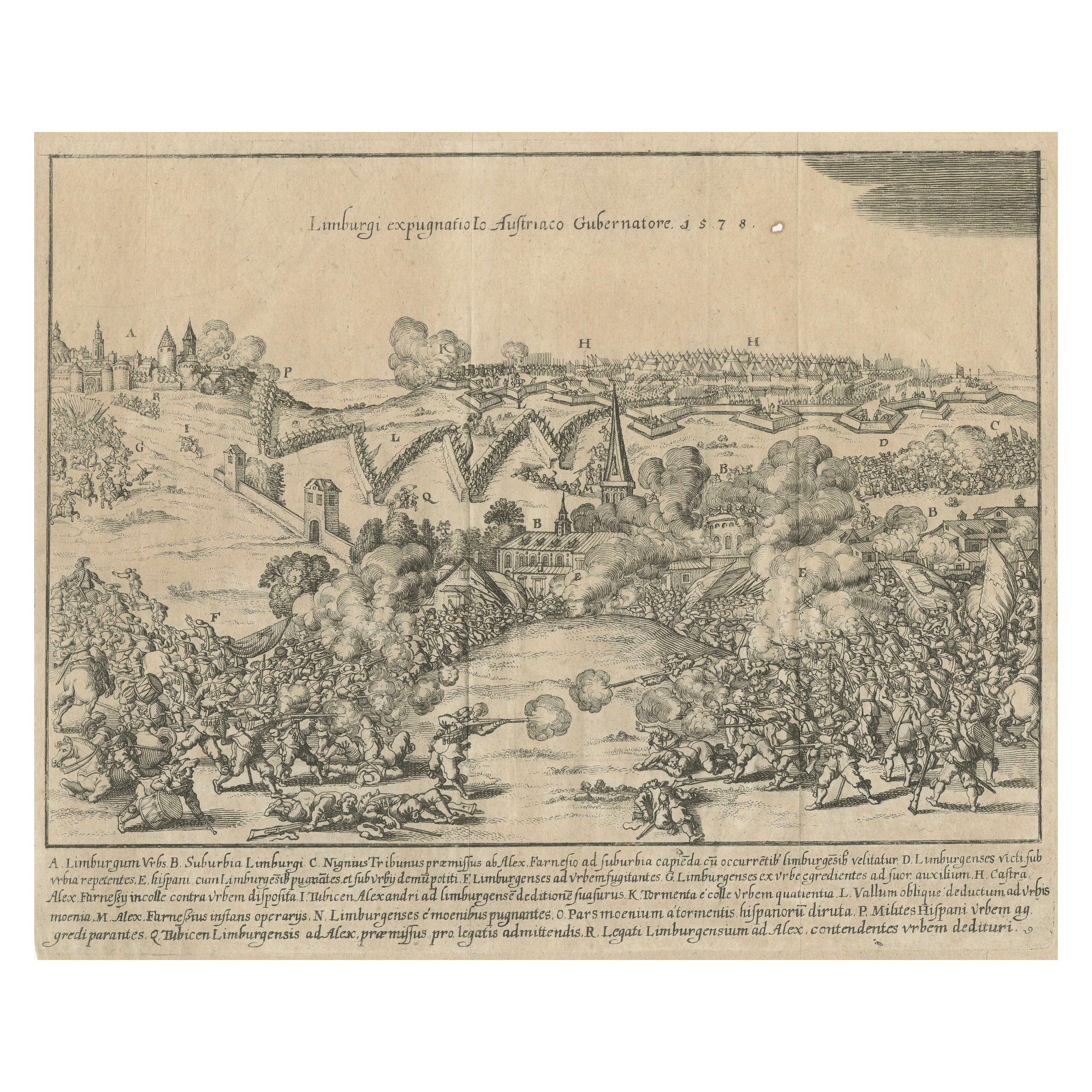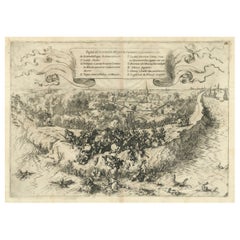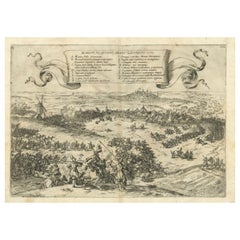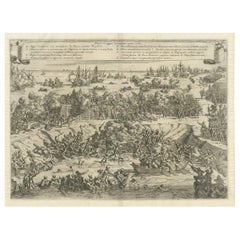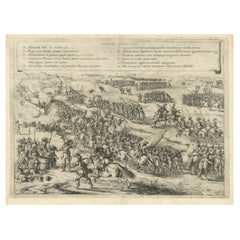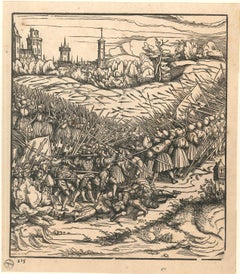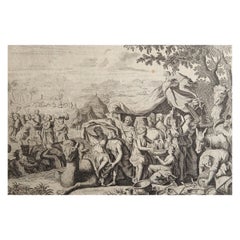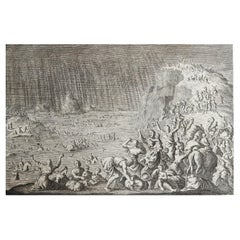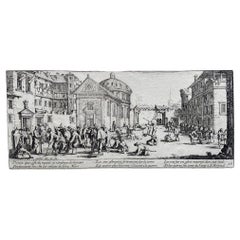Items Similar to Clash at Rijmenam Engraved: A Turning Point in the Eighty Years' War, 1632
Want more images or videos?
Request additional images or videos from the seller
1 of 9
Clash at Rijmenam Engraved: A Turning Point in the Eighty Years' War, 1632
$746.93
$995.9025% Off
£558.99
£745.3225% Off
€630
€84025% Off
CA$1,030.45
CA$1,373.9325% Off
A$1,145.90
A$1,527.8725% Off
CHF 601.85
CHF 802.4725% Off
MX$14,009.79
MX$18,679.7325% Off
NOK 7,499.66
NOK 9,999.5425% Off
SEK 7,070.15
SEK 9,426.8725% Off
DKK 4,795.87
DKK 6,394.5025% Off
About the Item
Rare engraving depicting a battle in the Eighty Year' War.
The Battle of Rijmenam took place on July 31, 1578, during the early stages of the Eighty Years' War. It was a conflict between the States-General of the Netherlands and the Spanish governor-general, resulting in a Spanish defeat.
The forces of the States-General set up camp at Rijmenam under the overall leadership of the Count of Boussu. Their army consisted of 12,000 infantry and 7,000 cavalry. The English mercenaries were led by Sir John Norris and Sir Richard Bingham, the Scottish mercenaries by Robert Stuart, and the French Huguenots by François de la Noue.
Don Juan of Austria, the Spanish commander, commanded an army of 12,000 infantry and 5,000 cavalry. He planned to attack before reinforcements from Zutphen could arrive. His subordinates, Alexander Farnese and Gabrio Serbelloni, considered this too risky, but Don Juan proceeded with his plan and launched an early morning attack on July 31. He attempted to draw Boussu out for an open field battle, but Boussu stayed behind the dug trenches.
After three hours of waiting, Don Juan ordered a company of musketeers under Alonso de Leyva and three groups of cuirassiers under the Marquis del Monte to stage a feigned attack on the village's rear. In response, Boussu sent Norris to confront them. Following the initial skirmish, Scottish forces under Stuart and Spanish infantry under Fernando Álvarez de Toledo joined the fray. Concurrently, Alexander Farnese advanced towards the trenches. Toledo pushed Norris back into the village, where Norris set some houses on fire and counterattacked.
Believing that Boussu had ordered a retreat and therefore set everything ablaze, Leyla and Toledo fought their way with 500 musketeers and 600 cavalry to the center of the village. Boussu's artillery then opened fire, and the Scottish forces attacked, leading Alexander Farnese to command the retreat.
This summary of the Battle of Rijmenam highlights the strategic movements and decisions made by both sides, which culminated in the Spanish withdrawal and marked the battle as a significant encounter in the Eighty Years' War.
The Latin text on the print relates to the Battle of Rijmenam in 1578 and appears to describe different aspects or key moments of the battle. Here is the translation of the inscriptions:
A. The remnants of the federates' camp as they retreated.
B. The city of Mechlin (Mechelen).
C. The federates' camp between the forest and the river.
D. The day's river.
E. The battle between the federates and the Austrians.
F. Count Bossu, the federates' leader, encouraging his men.
G. Norreys, the English tribune, supporting his men on horseback while ascending.
H. The Scottish, fighting naked.
I. Alva, showing his forces in battle array.
K. Alva's men, a part of the foot soldiers retreating.
L. Infantry forming a circle and defecting into the forest.
M. The Spaniards in the forest awaiting their own.
N. Octavio Gonzaga, retreating with his horsemen.
O. Cavalry retreating into the forest.
P. Squadrons sustaining the enemy's charge while they withdraw.
Q. Auxiliaries sent from the camp.
R. Don Juan of Austria, displaying his army.
This transcription and translation provide a snapshot of the key players and actions during the battle, offering a glimpse into the tactical movements and the ebb and flow of the conflict as depicted in the print.
- Dimensions:Height: 13.9 in (35.3 cm)Width: 17.92 in (45.5 cm)Depth: 0 in (0.02 mm)
- Materials and Techniques:Paper,Engraved
- Period:1630-1639
- Date of Manufacture:1632
- Condition:Good, given age. General age-related toning, creasing and/or occasional minor defects from handling. Middle fold line as issued. Edges slightly browned due to age. Please study scan carefully.
- Seller Location:Langweer, NL
- Reference Number:Seller: BG-13637-151stDibs: LU3054338528662
About the Seller
5.0
Recognized Seller
These prestigious sellers are industry leaders and represent the highest echelon for item quality and design.
Platinum Seller
Premium sellers with a 4.7+ rating and 24-hour response times
Established in 2009
1stDibs seller since 2017
2,607 sales on 1stDibs
Typical response time: <1 hour
- ShippingRetrieving quote...Shipping from: Langweer, Netherlands
- Return Policy
Authenticity Guarantee
In the unlikely event there’s an issue with an item’s authenticity, contact us within 1 year for a full refund. DetailsMoney-Back Guarantee
If your item is not as described, is damaged in transit, or does not arrive, contact us within 7 days for a full refund. Details24-Hour Cancellation
You have a 24-hour grace period in which to reconsider your purchase, with no questions asked.Vetted Professional Sellers
Our world-class sellers must adhere to strict standards for service and quality, maintaining the integrity of our listings.Price-Match Guarantee
If you find that a seller listed the same item for a lower price elsewhere, we’ll match it.Trusted Global Delivery
Our best-in-class carrier network provides specialized shipping options worldwide, including custom delivery.More From This Seller
View AllFirst Sparks of the Eighty Years' War in Oosterweel in 1567, Engraved in 1632
Located in Langweer, NL
An original antique engraving of the Battle of Oosterweel, which took place in 1567 during the Dutch Revolt. It is an early conflict leading up to the full-scale Eighty Years' War. T...
Category
Antique 1630s Prints
Materials
Paper
$796 Sale Price
20% Off
Free Shipping
Old Engraving of The Battle of Bergen in Hainaut during the Eighty Years', 1632
Located in Langweer, NL
The print is a historical depiction of the Siege of Bergen (also known as Mons) in Hainaut in 1572, during the Eighty Years' War.
This event is significant as it involved Count Lou...
Category
Antique 1640s Prints
Materials
Paper
$796 Sale Price
20% Off
Free Shipping
Siege and Struggle: The Kauwensteinse Dike in the Eighty Years' War, 1647
Located in Langweer, NL
Battle on the Kauwensteinse dike, 26 mai 1585, attack from the Staten army and ships from Sealand on the dike against the Spanish in the Eighty Years' War.
An original historical ar...
Category
Antique 1640s Prints
Materials
Paper
$796 Sale Price
20% Off
Free Shipping
The Aftermath of Battle for Oudenaarde in the Eighty Years' War Engraved in 1632
Located in Langweer, NL
This original rare print depicts the siege and capture of Oudenaarde on July 5, 1582, during the Eighty Years' War. A notable incident during this event was the miraculous escape of ...
Category
Antique 1630s Prints
Materials
Paper
$796 Sale Price
20% Off
Free Shipping
Battle of Kauwenstein Dijk, 1585: Siege of Antwerp Engraving with Latin Legend
Located in Langweer, NL
The 'Battle for the Kauwenstein Dijk', engraved and titled Pugna in Aggerere Covenstio Anno 1585, depicts a significant battle during the Siege of Antwerp on 26 May 1585.
The engraving illustrates the fierce combat around the Kauwenstein embankment, where the Spanish forces under the Duke of Parma attempted to cut off supplies to the city of Antwerp, leading to intense fighting.
The scene vividly portrays soldiers engaged in close combat, naval forces in the background, and smoke rising from the battlefield as cannon fire and musket shots fill the air. The embankment, partially breached, is a focal point, showing the chaotic nature of the battle as forces from both sides converge.
At the top, the title is inscribed in Latin, and a detailed legend (A-O) at the bottom provides further explanations about various parts of the battle, referencing key locations, troops, and actions. The detailed precision of the engraving reflects the high level of craftsmanship typical of 16th-century military engravings...
Category
Antique 16th Century Prints
Materials
Paper
$275 Sale Price
20% Off
Capture of Limburg by Spanish Forces under Duke of Parma, 1578 - Engraving
Located in Langweer, NL
This engraving illustrates the capture of Limburg by Spanish forces under the command of Alexander Farnese, Duke of Parma, in 1578 during the Eighty Years' War. The scene vividly dep...
Category
Antique 16th Century Prints
Materials
Paper
$275 Sale Price
20% Off
You May Also Like
Battle Scene - 1790s - Hans Burgkmair - Lithograph - Modern
Located in Roma, IT
Battle Scene is an original artwork realized in 1799 (after an original artwork realized in 1515) by Hans Burgkmair. Original lithograph on paper.
The a...
Category
1790s Modern Figurative Prints
Materials
Lithograph
Original Antique Print After Jan Luyken, Amsterdam, Genesis XXXI, 1724
Located in St Annes, Lancashire
Wonderful copper-plate engraving after Jan Luyken
Published by Marten Schagen, Amsterdam. 1724
Text on verso
The measurement given is the paper size.
Category
Antique 1720s Dutch Renaissance Prints
Materials
Paper
Original Antique Print After Jan Luyken, Amsterdam, Genesis VII, 1724
Located in St Annes, Lancashire
Wonderful copper-plate engraving after Jan Luyken
Published by Marten Schagen, Amsterdam. 1724
Text on verso
The measurement given is the paper size.
Category
Antique 1720s Dutch Renaissance Prints
Materials
Paper
Jacques Callot "Misères Et Malheurs De La Guerre" Collection of Engraving 17th
By Jacques Callot
Located in Beuzevillette, FR
“Les Misères Et Les Malheurs De La Guerre” (“The misfortunes of war”) more commonly called “the great miseries of war” (“The great miseries of war”) is a major work by the 17th centu...
Category
Antique 17th Century French Louis XIII Prints
Materials
Paper
Large Pair of 18th Century Continental Battle Scene Engravings
Located in Atlanta, GA
Large Pair of 18th Century Continental Battle Scene Engravings in Faux Tortoiseshell Frames
Category
Antique 18th Century European Prints
Materials
Glass, Paper
Daniel Marot's The Siege of the Dutch Fortified City of Ypres by Louis XIV
By Daniel Marot
Located in Alamo, CA
"Ypres, Grand Ville Riche & Marchande" is an engraving and etching by Daniel Marot (le Vieux) (1661–1752). It depicts a view of the siege of the city of Ypres and its citadel on the left in the Spanish Netherlands by Louis XIV's troops. This battle took place between March 18 and March 25, 1678, as part of the Franco-Dutch War. Marot illustrated in great detail (best appreciated with magnification) the French attack on the strong pentagonal citadel on the extreme left, which had been built recently in anticipation of a French attack. The trenches built by the French approaching the town are seen on the right. King Louis XIV can be seen in the foreground surveying the battle mounted on his white horse, surrounded by his officers and troops.
The print is presented in an attractive ornate black wood frame with a cream-colored double mat with a black inner trim. It is glazed with plexiglas. The frame measures 25.38" x 22.63" x .88". The engraving, frame, mat and glazing are in excellent condition.
Artist: Daniel Marot (1661–1752) was also called "Le Vieux". He was the son of the famous architect, Jean Marot. Marot had diverse interests and talents. In addition to his art, he designed garden projects, architectural ornaments, furniture, and even upholstery. Marot as a Huguenot protestant was forced to leave France in 1685 following the revocation of the Edict of Nantes. He emigrated to Holland, where he worked for William of Orange (an arch enemy of his former employer Louis XIV). Marot was largely responsible for the interiors of Williams palace at the Loo. In 1694 he went Britain as William had married Queen Mary and he had become King William III of England. He later returned to Holland in about 1698 and died in the Hague in 1752. He left a lasting legacy on the decorative arts in the Netherlands, where his grand version of the Louis XIV style remained popular into the 1730s.
Historical Background: In October 1677, Mary Stuart, niece and possible successor of Charles II of England, married Louis XIV's arch enemy William III of Orange...
Category
Late 17th Century Old Masters Landscape Prints
Materials
Engraving, Etching
More Ways To Browse
G Engraved Initial
French Cavalry
M Alvarez
Used Marble Countertops
Used Wash Fountain
Van Keppel Green
Vermont Antique Furniture
Victorian Parlor Set
Victorian Toilet
Vintage 5 Panel Door
Vintage Floral Tins
Vintage Green Glass Wine Bottle
Vintage Mickey Mouse
Vintage Teak Folding Desk
Vintage Tin With Lid
Widdicomb Cane
Windmill Weights
Wood Carved Chicken
